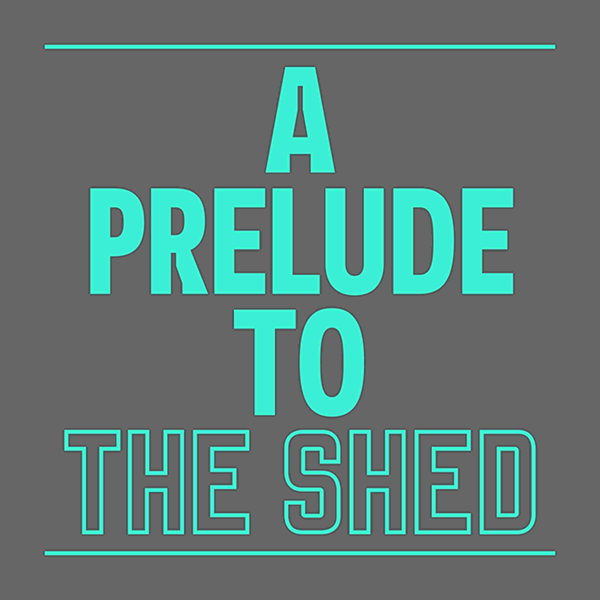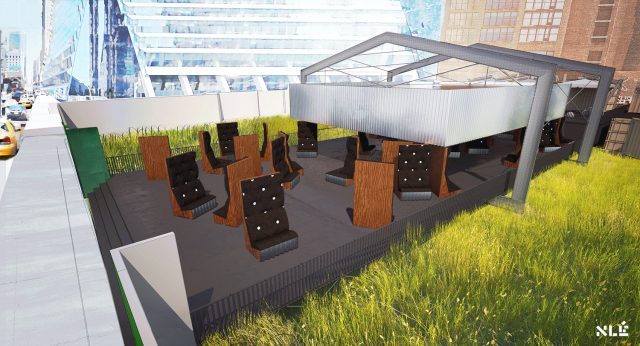
A PRELUDE TO THE SHED
Tuesday, May 1, to Sunday, May 13, free with advance tickets
Tenth Ave. at West Thirty-First Sts. (entrance on West Thirty-First)
theshed.org
If you’ve wondered what that strangely curious building going up on West Thirtieth St. between Tenth & Eleventh Aves. is, we now know. It’s called the Shed, which bills itself as “the first arts center designed to commission, produce, and present all types of performing arts, visual arts, and popular culture.” The Shed, a 200,000-square-foot structure designed by Diller Scofidio + Renfro in collaboration with the Rockwell Group, will open next spring with intriguing, exciting projects by Steve McQueen and Quincy Jones; Gerhard Richter and Steve Reich; Anne Carson with Ben Whishaw and Renée Fleming; Trisha Donnelly; Agnes Denes; and others. “The original idea for the Shed was relatively simple: provide a place for artists working in all disciplines to make and present work for audiences from all walks of life,” Shed artistic director and CEO Alex Poots, formerly director of the Park Ave. Armory, said in a statement. “Our opening programs begin to show how these artists, art forms, and audiences can thrive together under one roof.” But before the Shed officially opens, it will be holding a preopening program, “A Prelude to the Shed,” in a flexible, transformable venue in an undeveloped lot at Tenth Ave. and West Thirty-First St., designed by architect Kunlé Adeyemi of NLÉ Works and conceptual artist Tino Sehgal. “‘A Prelude to the Shed’ is an exploration of architecture as an extension of human body, culture, and environment. Can architecture be more human?” Adeyemi explained in a statement. “This curiosity led us to reconfigure a steel shed into a comfortable interface to interact with people physically; inside and outside, in light and darkness, individually and collectively. Using simple technologies, we made the structure so that it can be moved and transformed by people, enabling its participation in different formats of art, education, events, and public life.”

“A Prelude to the Shed” takes place May 1-13 (rendering courtesy of NLÉ Works)
From May 1 to 13, visitors with advance free tickets can see live music and dance, panel discussions, art installations, and more. (There should be some walk-up availability as well.) Each session includes Sehgal’s continuous, immersive dance/sound piece This variation, which interacts with choreographer William Forsythe’s Pas de Deux Cent Douze, a reimagining of the central duet from his 1987 ballet In the Middle, Somewhat Elevated. On some nights, Reggie “Regg Roc” Gray will lead “D.R.E.A.M. Ring Dance Battles,” part of FlexNYC. Several nights will feature live solo concerts by ABRA, Arca, and Azealia Banks; on other nights there will be panel discussions organized by Bard professor Dorothea von Hantelmann with Shed senior program adviser Hans Ulrich Obrist and chief science and technology officer Kevin Slavin. Among the topics are “Transformative Topologies: Past, Present, and Future Functions of Art Institutions,” “Beyond the Mind/Body Division: Neuroscience, Technology, Spirituality,” “Agnes Denes: Animale, Rationale, Mortale,” and “A Global Dialogue That Is Not Globalization,” boasting such international thinkers as Manthia Diawara, Tim Morton, Avital Ronell, Barbara Browning, Moncell Durden, Nelson George, Frankie Decaiza Hutchinson, Akeel Bilgrami, Joy Connolly, Tim Ingold, Emily Segal, and Richard Sennett. And on May 5 and 12 at 11:30 am, Asad Raza, Jeff Dolven, and D. Graham Burnett’s “Schema for a School” experimental course for students will be open to the public. “Prelude” will also pay tribute to architect Cedric Price’s unrealized 1961 building “The Fun Palace” with an archival interactive display. We’re out of breath already, and this is only the preopening. So we’ll let von Hantelmann sum it all up: “Art institutions — museums, exhibitions, theaters, concert halls, festivals — have always been spaces in which a social structure becomes manifest. To find ritual forms that correspond to contemporary forms of life and to the social structures of the early twenty-first century, that is the aspiration to which this project is dedicated.”